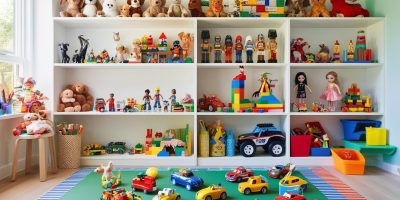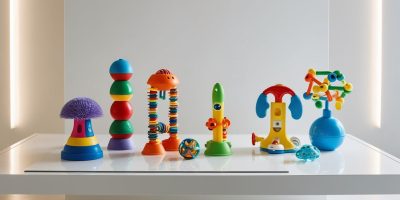When we think of language development, we usually picture books, songs, or flashcards—not robots, blocks, or science kits. But here’s a surprise: STEM toys can be a powerful tool for helping kids develop language skills—especially when you know how to use them.
From toddlers just beginning to talk to older children expanding their vocabulary, STEM play invites kids to express ideas, solve problems out loud, and engage in meaningful conversations. Here’s how.
1. STEM Toys Spark Descriptive Language
When a child builds a tower, programs a robot, or mixes colors in a science kit, they naturally start to describe what they’re doing:
“I’m putting the blue block on top.”
“Look, it spins when I press this.”
“I think it needs more water.”
This kind of real-time narration builds a rich vocabulary—especially around action words, colors, shapes, sizes, and cause-and-effect.
2. They Invite Questioning and Conversation
STEM activities are full of questions, like:
- “What will happen if…?”
- “Why did it fall?”
- “How can we fix it?”
This naturally encourages back-and-forth dialogue, which is essential for both expressive and receptive language development. It teaches kids how to form hypotheses, articulate thoughts, and respond thoughtfully—core communication skills for life.
3. STEM Toys Add Context to New Words
Children learn words best in context. STEM toys provide that beautifully.
For example, when you’re playing with a magnet set, you can introduce terms like “attract,” “repel,” “force,” and “pole.” When those words are tied to a physical, hands-on experience, they stick.
4. They Encourage Sequencing and Storytelling
STEM play often follows a process:
- Gather materials
- Plan the build
- Assemble
- Test
- Adjust
- Share the result
When children talk about what they’re building or explain what they did, they practice sequencing events, using transition words like “first,” “then,” “next,” and “finally.” This is a foundational skill for both narrative language and writing later on.
5. They’re Perfect for Collaborative Play
STEM toys frequently invite teamwork, whether with a sibling, parent, or playmate. Kids must explain their ideas, negotiate roles, and solve conflicts.
These real-world social interactions build pragmatic language skills—the ability to use language appropriately in different social settings.
6. They Support Bilingual or Delayed Speakers
For kids who are learning more than one language—or those with speech delays—STEM toys offer a low-pressure way to practice talking. They don’t require memorization or reading skills—just curiosity and conversation.
Pairing STEM toys with open-ended questions like “What do you think will happen?” or “Can you tell me about your design?” gently encourages speech and expression.
7. They Help Adults Model Rich Language
STEM play gives grown-ups endless opportunities to model language in natural ways:
- “Let’s observe what’s changing.”
- “Do you think it’s symmetrical?”
- “Wow, that’s a creative solution!”
When adults talk through challenges and discoveries, kids soak up the vocabulary—and the thinking patterns that come with it.
Why It Matters
STEM toys may be labeled for science or math, but they’re covert allies in your child’s language journey. They give kids a reason to talk, the words to use, and the confidence to share.
So go ahead—bring out the robot kit or the marble run. You’ll be amazed how many big words and bright ideas come pouring out during play.





